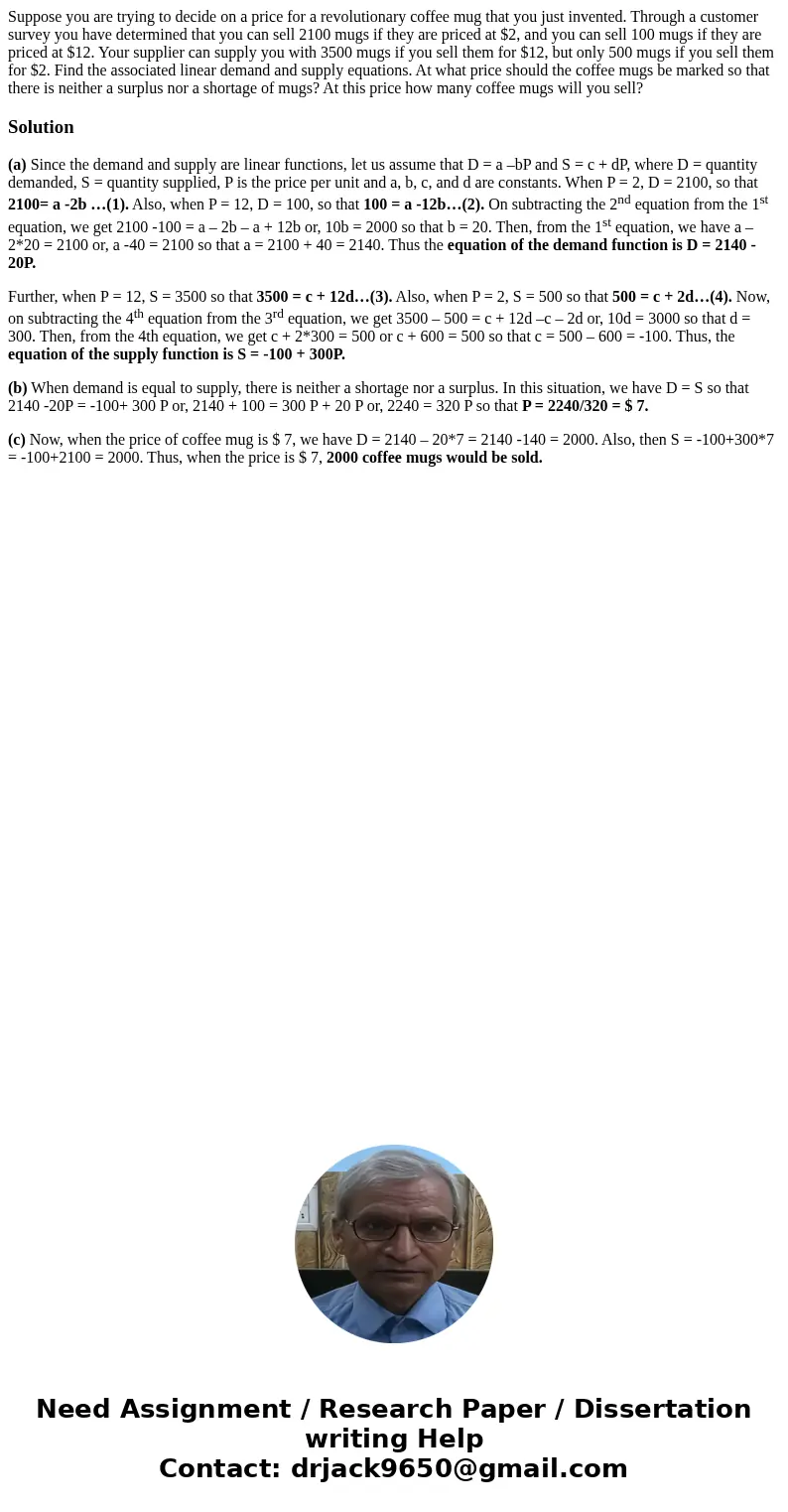Suppose you are trying to decide on a price for a revolution
Solution
(a) Since the demand and supply are linear functions, let us assume that D = a –bP and S = c + dP, where D = quantity demanded, S = quantity supplied, P is the price per unit and a, b, c, and d are constants. When P = 2, D = 2100, so that 2100= a -2b …(1). Also, when P = 12, D = 100, so that 100 = a -12b…(2). On subtracting the 2nd equation from the 1st equation, we get 2100 -100 = a – 2b – a + 12b or, 10b = 2000 so that b = 20. Then, from the 1st equation, we have a – 2*20 = 2100 or, a -40 = 2100 so that a = 2100 + 40 = 2140. Thus the equation of the demand function is D = 2140 - 20P.
Further, when P = 12, S = 3500 so that 3500 = c + 12d…(3). Also, when P = 2, S = 500 so that 500 = c + 2d…(4). Now, on subtracting the 4th equation from the 3rd equation, we get 3500 – 500 = c + 12d –c – 2d or, 10d = 3000 so that d = 300. Then, from the 4th equation, we get c + 2*300 = 500 or c + 600 = 500 so that c = 500 – 600 = -100. Thus, the equation of the supply function is S = -100 + 300P.
(b) When demand is equal to supply, there is neither a shortage nor a surplus. In this situation, we have D = S so that 2140 -20P = -100+ 300 P or, 2140 + 100 = 300 P + 20 P or, 2240 = 320 P so that P = 2240/320 = $ 7.
(c) Now, when the price of coffee mug is $ 7, we have D = 2140 – 20*7 = 2140 -140 = 2000. Also, then S = -100+300*7 = -100+2100 = 2000. Thus, when the price is $ 7, 2000 coffee mugs would be sold.

 Homework Sourse
Homework Sourse